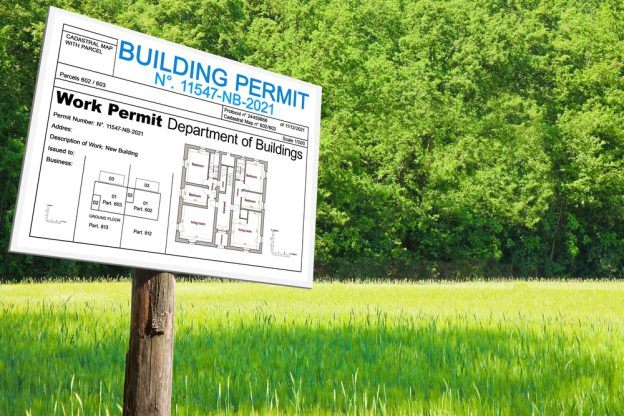You’ve put in the hard hours, you’ve done the hard work, and you’ve finally passed the notorious CSLB exam. Now’s the time to submit your bonds and insurance to the CSLB and get your contractor’s license.
Not so fast. There’s one thing that many contractors overlook – every contractor needs to establish a company for themselves, whether they’re a day jobber working on roofs in their neighborhood, or a multinational company beginning work in California for the first time.
But what kind of business should you establish for your contracting business? How do you even decide? In this article, we’ll cover some of the essentials when it comes to deciding what kind of business structure you should establish for your contracting company.
The California Secretary of State and the CSLB
The authority that regulates business in California is called the Secretary of State, but the CSLB – as always – is the one who requires all contractors to register as a business in the state.
It’s important to note that while technically speaking you do not need to have a business or to be registered with the California SoS, it’s all but necessary for contractors to have their own business. Without a proper business structure and registration, you expose yourself to financial risk, liability risk, to reputational risk in case anything goes wrong.
Registering a Business: A Prerequisite for CSLB Licensing
Before you can apply for a contractor’s license from the CSLB, you must first register your business with the state of California. This is a critical step in the licensing process. The type of business structure you choose will determine the specific registration process you must follow – more on that later.
Once your business is registered, you can then proceed to apply for a contractor’s license from the CSLB. The application process involves demonstrating your qualifying experience, passing an examination, and getting fingerprinted for a criminal background check.
Remember, operating a contracting business without a valid license from the CSLB is illegal in California and can result in hefty penalties. Therefore, it’s crucial to ensure your business is properly registered and licensed before you start offering contracting services.
Sole Proprietorship: Simplicity with Personal Liability
For 99% of contractors, you’ll want to set up as a sole proprietorship.
In its simplest form, this means you are the only operator and only employee in the business. As you can imagine, this is the structure that independent construction specialists (those with Class C licenses) like plumbers, HVAC techs, and welders use, as they’re often one-man bands.
In California, contractors operating as sole proprietors must register their business with the county clerk’s office in the county where the business is located. They must also obtain an Employer Identification Number (EIN) from the IRS, even if they don’t have employees, as an EIN is required for certain federal tax filings.
Partnership: Shared Ownership and Responsibilities
A partnership is a business structure where two or more individuals share ownership. Partnerships can be general or limited in liability – which essentially defines what you’re liable for in case of losses.
In a general partnership, all partners share in the business’s profits and losses, and each partner is personally liable for business debts. In a limited partnership, one or more general partners have unlimited liability, while the limited partners have liability only up to the amount of their investment.
This setup is a good situation for family businesses or situations where you and some of your friends, family, or local community are all banding together to work together. This way, the people involved in your company’s success are liable for losses as well as profits.
When setting up a partnership, documentation is key. Partnerships require a written agreement detailing the division of profits, roles and responsibilities, and procedures for resolving disputes. Partnerships in California must register with the Secretary of State and obtain an EIN from the IRS.
Corporation: Maximum Protection with Increased Complexity
“Corporation” might be a dirty word nowadays, but for contractors, it can be a very useful business structure. A corporation is a legal entity separate from its owners, providing the most protection from personal liability, but the tradeoff is it takes tons of resources to begin – and even more to maintain.
Corporations have the most complex business structure and require more time and money to maintain. Corporations are required to hold regular board meetings, maintain corporate records, and file corporate income tax returns – all of which are extremely complicated and difficult, especially for corporations.
In addition to filing a formation of business with the California SOS, corporations must also adopt bylaws, issue shares of stock, and file an annual report. Corporations are taxed at the corporate rate and may face double taxation if profits are distributed to shareholders as dividends.
Limited Liability Company (LLC)
An LLC combines the liability protection of a corporation with the tax benefits and simplicity of a partnership. This, in addition to Sole proprietorship, are rather common in the construction world, as it blends both the liability protection of corporations with the freedom and flexibility of a sole proprietorship or partnership.
Owners of an LLC, known as members, are not personally liable for the company’s debts and liabilities. There can be as many members as you want to name. We have to recommend an LLC structure for your contracting business, it’s a nice balance of all the other various structures.
The Role of Qualifying Individuals in Business Structures
In California, every contractor license requires a qualifying individual, or “qualifier,” who has demonstrated their knowledge and experience through the application process and holds one or more license classifications. If you’re a contractor, you either are a QI or work for a QI.
A qualifier may be a Sole Owner, Qualifying Partner, Responsible Managing Employee (RME), Responsible Managing Officer (RMO), Responsible Managing Manager, or Responsible Managing Member.
Being a qualifier on a license can be a significant risk and liability. Under Business and Professions (B&P) Code section 7122.5, if the performance of an act or omission by the license constitutes a cause for disciplinary action, it also is a cause for disciplinary action against the qualifier, regardless of their knowledge and participation.
Conclusion
Choosing the right business structure for your contracting business in California is a critical decision to both your business’s success and your personal liability. It’s essential to consider your business’s nature, your personal risk tolerance, and your long-term business goals when making this decision, as this decision is extremely subjective and equally important.
When opening your business, it’s definitely worth the time to meet with someone who can help you make the right decision. Someone with experience in California law knows the tax codes, and has the general financial know-how that can provide individualized advice – these are definitely worth the money when opening your business.
Additional Reading
“Starting a Business Checklist.” California Secretary of State
“Employer ID Numbers.” Internal Revenue Service
“Partnerships.” Internal Revenue Service
“Corporations.” California Secretary of State
“Corporation Tax Rates.” Franchise Tax Board
“Contractors State License Board.” State of California
“Absentee Qualifiers.” Contractors State License Board









